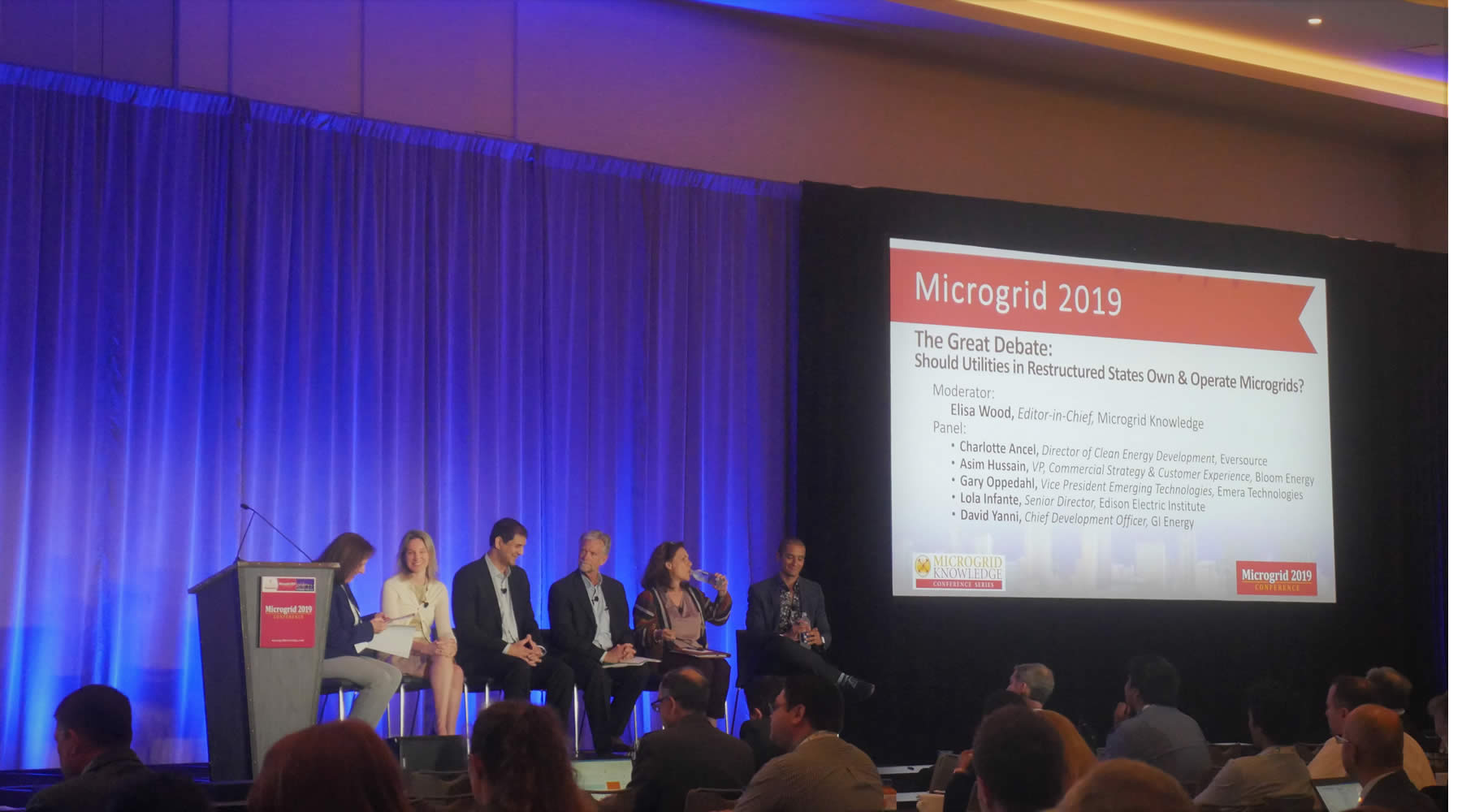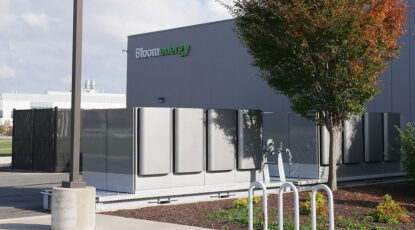What role should utilities play when it comes to microgrids?
That was the question posed by Microgrid Knowledge editor-in-chief, Elisa Wood to an expert panel at the recent Microgrid 2019 Conference in San Diego.
The timing and the location of the discussion were apt. Local utility San Diego Gas and Electric has sought to become one of the nation’s most progressive adopters of microgrids, viewing the technology as a way to protect communities from wildfires.
But, SDG&E’s plans recently hit a snag when regulators suggested the utility’s process for choosing its microgrid vendors was flawed. The case study seems to reflect the complexity of utility microgrid adoption overall.
Panelist Gary Oppedahl, vice president of emerging technologies at Emera Technologies, articulated the current landscape: “There are three options for utilities: be obstructionists, bystanders, or engage and implement.”
As obstructionists, utilities can actively block microgrid development. Strange as it may seem in an era of escalating and lengthening grid outages, but some municipal utilities have blocked distributed generation deployments as a way of protecting revenues generated by existing power generators.
As bystanders, utilities can facilitate projects with simple sign-offs and interconnection, but they benefit little from their deployment.
Alternatively, utilities can actively engage and help in implementing smart, holistic microgrid strategies.
Representing both utilities and microgrid providers, Charlotte Ancel of Eversource, Asim Hussain of Bloom Energy, Gary Oppedahl of Emera Technologies, Lola Infante of Edison Electric Institute, and David Yanni of GI Energy, all agreed that the utility embrace of microgrids presents a win-win opportunity.
Citing a specific example of a joint utility and power provider microgrid, Asim Hussain, vice president of commercial strategy and customer experience at Bloom Energy, shared that, “in collaboration with New York utility Con Ed’s Brooklyn Queens Demand Management project, Bloom Energy has supplied a fuel cell microgrid system to power the Marcus Garvey Housing Project, which would have otherwise depended on the overburdened local substation.”
Con Ed has been among the most progressive of East Coast utilities in providing incentives for customers to adopt distributed generation and microgrids as a way to offset potentially costly grid upgrades.
Through Con Ed’s Brooklyn Queens Neighborhood Program, the Marcus Garvey Apartments are powered by a microgrid that includes rooftop solar, battery storage, and a 400-kilowatt fuel cell system. The microgrid provides 1.1 megawatts of power to the 625 apartments all year round.
“It’s not either/or, it’s an and solution,” said Hussain, “there’s a role for utilities and a role for developers, and we both need to contribute.”
Another “and” example came from Charlotte Ancel, director of clean energy development at Eversource. The company’s Bring-Your-Own-Device program plans to build a non-wires solution, focused on battery power, to provide more reliable power to a rural New Hampshire town previously plagued with outages.
The unique reach and experience of utilities makes them enticing partners for microgrid developers. But microgrid developers at Microgrid 2019 urged utilities to share information and data more openly and fairly.
“It should be a level playing field and metrics should be made available,” summarized Hussain. He continued, “It goes the other way too. What’s equally important is that microgrid developers be held accountable to metrics and guarantees that provide benefits to grid operators.”
It was clear from the panel discussion that openness, transparency, and above all, speed are not hallmarks of current utility and microgrid developer collaborations. Complaints of slowness in interconnection, approvals, and the evolution of regulation are rampant among developers and those attempting to implement innovative solutions.
Still, there are hopeful signs. In 2018, California adopted SB 1339 to boost microgrid development and to streamline lengthy waits for interconnects. Reporting on the passage of SB1339 at the time, Microgrid Knowledge noted the State’s research in support of the bill had revealed “great interest in the development of microgrids but also great frustration…and many are just lined up at the door waiting for the energy regulators to clear the path.”
The innovators on the panel agreed these delays are tough to accept. However, developers and utility representatives also conceded there is no real consensus on how the utility model should evolve, and how microgrids should be factored into rate design. Panelists agreed that more alignment between the communities would help.
David Yanni, chief development officer at GI Energy, suggested we are most likely to see changes starting at the ‘edges’ of the grid, and working their way inward.
He cites the example of California cannabis growers operating far from urban centers. “Cannabis grows are becoming more prevalent and being built in rural areas on the outskirts of the grid, driving them to look to microgrids for power solutions.” Taking it to the next level, Yanni continued, “Economies are now developing around these areas, so we can even see microgrids creating local energy demand.”
The potential is evident. Where we’ll see the intersection of utilities and microgrids provide mutual benefit, is where new, tough problems are tackled with creative and collective solutions.



